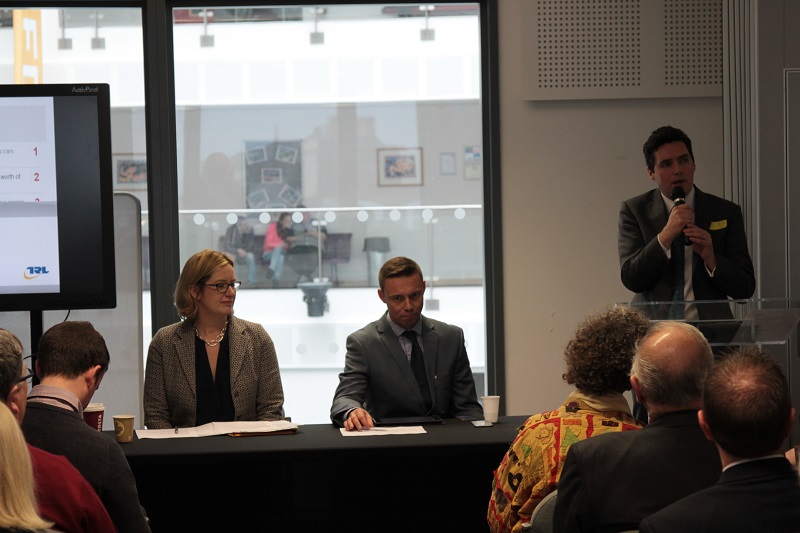Local MP Amber Rudd’s Transport Summit heard about a possible way to drive forward the high speed train plans for Ashford to Bexhill – but a local activist suggests there are points both for and against this idea, which may just be a delaying tactic.
Last Friday March 18, I attended Amber Rudd’s Rail and Road Summit at Sussex Coast College in Hastings representing Rye Town Council. It was a two hour meeting with local MPs, the Under Secretary of State for Transport and senior managers from the rail companies and Network Rail.
The meeting was chaired by Ray Chapman of the East Sussex Rail Alliance.
First up were Charles Horton of Govia Thameslink and Alex Foulds of Southern Railway and we were told that Thameslink was getting new rolling stock and Southern is recruiting more drivers to avoid overtime and rest day working – so this should mean no more trains cancelled due to shortage of staff.
One local piece of information – the vegetation is being cut back beside the track from Ore to Rye.
David Statham of Southeastern said that his company’s main aim was to improve information for the rail travellers. One thing to note is that the parent company of Thameslink, Southern and Southeastern is Govia.
Paul Best of Network Rail spoke about the possible electrification of the Marshlink from Ore to Ashford. It was part of the long term planning process and will be in the control period 2019-24. Consultation will begin in September this year and it may be possible to fit bi-mode, ie dual fuel, batteries to rolling stock to remove the need to electrify the line.
Bexhill and Battle MP Huw Merriman spoke next and thought that batteries under the high speed trains was a good way forward.
Andrew Jones MP, Parliamentary Under Secretary of State for Transport, spoke about the Road Investment Strategy, but there was no mention of the A259. This strategy would be for the five years from 2020 and the consultation will be undertaken by Highways England from March 2017, with decisions announced in 2019.
After the meeting I discussed what was said with Stuart Harland, Chairman of the Marshlink Action Group, and here are some of his comments.
“It was a very interesting meeting where I think we got a strong steer from National Rail that we should be looking towards a hybrid Javelin to operate our direct service to London. However, I have concerns about that solution.
Firstly, the alternative we are looking for (electrification of the MarshLink line) will take until 2022 possibly to put in place and require lots of cash. But some downsides of abandoning this objective and changing our emphasis to hybridised Javelins are:
- Is Network Rail just wanting to be able to forget this project and concentrate on other priorities?
- Is it do-able, to fit sufficient batteries to a Javelin?
- Would this kit be economic to operate, with having to carry heavy batteries up to and down from London which are not being used for most of the journey? I can see the operating cost of these trains would be higher than other services and make this line less attractive to operate and, in different economic/political circumstances, more desirable to terminate
- On the other hand, the timescale (if doable) is probably shorter than electrification
- But we will finish up with kit only useful on this line so our kit requirements will, again, be unusual compared with our surrounding lines. So there could be issues when a train breaks down.
- We would also need different kit for the surrounding lines for the half-hourly service”.
Photo : Ray Prewer




Whilst I appreciate the work going on to improve the rail service I would like to know why we cannot have four carriages on this line.
Agree completely please see http://marshlinktrains.workpress.com where there is petition being setup asking Department of Transport to purchase us a train so we can have 4 car peak services in 6 months. Unfortunately 40 billion being spent on railways does not seem to coming to Hastings and Rye.